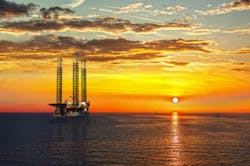Corrosion is an ever-present threat to assets both on and offshore. To deliver enhanced long-term integrity, operators can consider the following points to ensure that corrosion protection is an ongoing and proactive task, rather than reactive.
1. Corrosion monitoring for ensuring long-term integrity of assets
Lifetime extension of offshore assets continues to be a growing concern for operators, and dealing with corrosion is a necessary task to fight against the hazards of aging infrastructure.
Corrosion inhibitors are chemicals typically used to mitigate the corrosion rate of process systems and pipelines, however finding the optimal amount of inhibitor to inject is critical. To maximize production without compromising safety, corrosion monitoring results in better asset management, leading to improved long-term pipeline integrity.
2. Monitor corrosion to avoid pipeline failure
The industry recognizes that corrosion control is an integral and vital concern in the safety of offshore installations. Corrosion monitoring can prevent catastrophic failure and even total shutdown, maintaining the safe and reliable operation of onshore and offshore assets.
If a leak was to occur, this could not only cause damage to the surrounding environment, but also poses a significant threat to human safety. For example, corrosive liquids and gases are found in industrial processes and if the process’ pipes and vessels fail due to corrosion, this would result in an uncontrolled release, which could harm people and the environment. Having effective integrity management plans in place are essential elements that ensure regular review, control and mitigation of risk and are critical in maintaining safe and secure operations.
3. Considering the costs of not monitoring corrosion
Corrosion is an expensive business. The total annual cost of corrosion in the oil and gas production industry is estimated to be $1.372 billion, broken down into $589 million in surface pipeline and facility costs, $463 million annually in downhole tubing expenses, and another $320 million in capital expenditures related to corrosion. When a pipeline can cost $3m per km to replace, lengthening asset lifespan is very valuable.
When corrosion inhibitor levels are not monitored properly, this can cost operators significant amounts of money, without adding any benefits.
4. Corrosion monitoring to reduce your environmental footprint
Corrosion inhibitors are typically over-dosed, resulting in the excess passing through the system and discharged to the environment. As environmental protection becomes more of a driver for regulatory framework, there is a need to decrease the amount of excess inhibitors as these in some cases are currently toxic to land and marine environments.
Corrosion detection and monitoring assists in determining the optimum dosing level, drastically minimizing inhibitor usage and the associated discharge, the risk of pipeline leaks or unplanned loss of containment, resulting in a reduction of the risk of environmental damage.
5. Real-time data analysis for corrosion monitoring
Most corrosion detection technologies can take weeks for testing and analysis, leading to sample degradation and inaccurate findings. However, technologies are now available that eliminate the delay in lab analysis for operators, by providing near real-time data on whether optimum levels of corrosion inhibitors are present in fluids. These technologies represent a step change in the ability to provide timely, accurate and actionable information, allowing management to make informed decisions.
Corrosion management is essential for securing the long-term sustainability of offshore assets. Given the severe environments that the energy industry is increasingly moving in to, preventing asset failures resulting from corrosion has never been more important.



